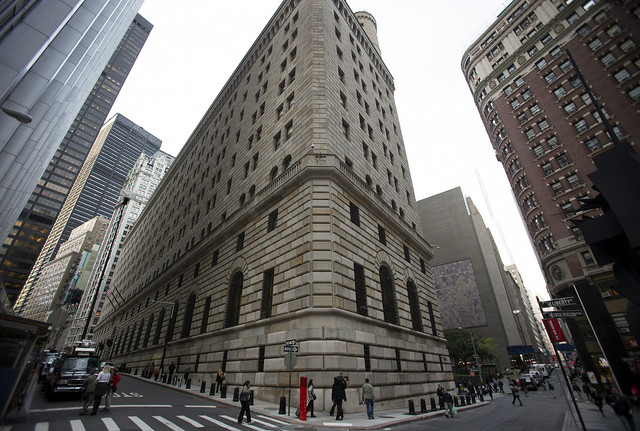
"Does this angle make me look fat?"
Our friend, the New York Fed, released its March 2014 Economic Policy Review (a collection of 11 Research Papers) and the topic du jour is that of Too Big To Fail banks. One of the main criticisms of TBTF banks is the implicit subsidy these firms receive in the form of lower borrowing costs (aka funding advantage) based on the expectation that the government will bail them out when push comes to shove. The NY Fed provides further color on this matter and other related issues.
There is a ton of material here but thanks to the wonderful invention of abstracts, I've been able to parse out the main points:
- TBTF and Subsidies
"Using information from bonds issued over the past twenty years, this study finds that the largest banks have a cost advantage vis-à-vis their smaller peers. This cost advantage may not be entirely due to investors’ belief that the largest banks are “too big to fail” because the study also finds that the largest nonbanks, as well as the largest nonfinancial corporations, have a cost advantage relative to their smaller peers. However, a comparison across the three groups reveals that the largest banks have a relatively larger cost advantage vis-à-vis their smaller peers. This difference is consistent with the hypothesis that investors believe the largest banks are “too big to fail."
- TBTF and Operating Costs
"In dollar terms, their estimates imply that for a [Bank Holding Company] of mean size, an additional $1 billion in assets reduces noninterest expense by $1 million to $2 million per year, relative to a base case where operating cost ratios are unrelated to size."
- TBTF and Risk
"The notion that some banks are “too big to fail” builds on the premise that governments will offer support to avoid the adverse consequences of their disorderly failures. However, this promise of support comes at a cost: Large, complex, or interconnected banks might take on more risk if they expect future rescues...A one-notch rise in the SRF is found to increase the impaired loan ratio by roughly 0.2—an 8 percent increase for the average bank. The authors show similar effects on net charge-offs and for U.S. banks only."
From the looks of it, Too Big Too Fail is for real. Or as Yves Smith says, "Duh!".





















